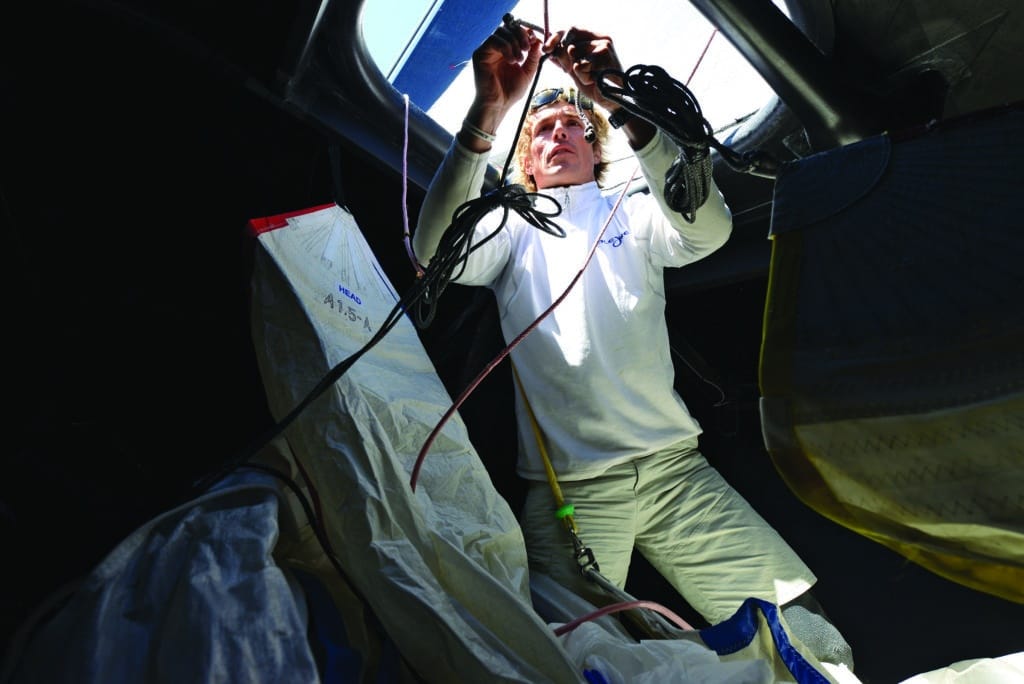John Kostecki is a guru of tactician yoga. Thanks to a strong start and a favorable left shift on the first beat, Race 5 of the first 52 Super Series stop of 2015, in Valencia, Spain, is an outwardly comfortable one for Kostecki and the rest of Andres Soriano’s crew on Alegre. Nonetheless, the former Oracle Racing tactician spends the runs transitioning from one tortured pose to the next as he seeks to preserve a precious second place. One moment he’s crouched on the leeward foot brace, packed into an impossibly tight ball and surveying the coming breeze and the trailing pack of TP52s. Later, with a crucial call to make, he plants his feet, arches his back and cranes his neck to leeward, a textbook Reverse Downwind Layline Salutation.
“I think we’re almost there,” he says, just loud enough to be heard over the rushing water and the occasional ease of the spinnaker sheet.
“I have 30 more seconds,” replies Alegre’s navigator, Will Best.
Kostecki, one of the few sailors with an Olympic medal and a victory in both the America’s Cup and the Volvo Ocean Race, holds his pose.
“Just telling you what’s on the box,” adds Best.
Splitting the difference, the American tactician calls for a jibe. A few minutes later the team buttonhooks around a gate mark—the spinnaker sucked through the forward hatch in less than three seconds—and heads upwind on starboard, the boat’s plumb bow slicing through the waves at a crisp, almost effortless, 8.5 knots.
As with the first beat, the left is right. Sled, owned by Takashi Okura, of Japan, wins wire-to-wire after pushing harder into the corner on the first leg. Alegre takes second. Just as importantly, series leader and pre-regatta favorite Rán, owned and helmed by Niklas Zennström, finishes 10th. After two more races, Alegre assumes the overall lead with two days of sailing remaining, a surprising position for Soriano, a TP52 first-timer, sailing a brand new boat.
When it goes well, sailing can seem so easy: start first and extend, as they say. When it doesn’t…well, who hasn’t been in that situation where every choice is the wrong one.
The same is true of class management. The MedCup, the Super Series predecessor, was founded in 2005. The fleet exploded to a staggering two-dozen boats in a few years. It imploded almost as quickly: At the end of 2011, the circuit’s management company bailed, and in 2012, the first year of the Super Series, there were only four boats. The class’s swan song was playing at full volume.
But it’s impossible to keep a good boat down, apparently. A trio of determined owners and a restoration of worldwide financial confidence have fueled a remarkable resurgence. Among the 12 boats competing in Valencia this spring are nine new builds. And more are on the way. The golden era of the TP52 has come again.
The TP52, or the Transpac 52, as it was once known, was conceived in 2001 by a group of West Coast designers and sailors, including Bill Lee, the godfather of fast-is-fun sailing. The class rule specifies a series of limits, a “box” in designer parlance, and encourages finding the fastest corner. For people frustrated by the slower-is-faster nature of measurement rules such as IOR and IMS, it was a breath of fresh air. The early boats were endurance athletes, built for hours, if not days, on one jibe and for surfing long Pacific rollers. They had oversized 28-foot spinnaker poles for distance races, functional offshore interiors, and twin wheels. Most importantly, they were a blast to sail, a boat that worked with the sailors, not against them.
The class spread east in 2004—winning overall corrected-time trophies in the 2004 Bermuda Race and Chicago Mac Race—and then headed to Europe where eager owners, sailors, and sponsors awaited.
The MedCup launched in 2005 and hit full burn. The presence of King Juan Carlos of Spain, who sailed regularly on José Cusi’s Bríbon, provided instant media acceptance. At its peak, the circuit generated more than $10 million in sponsorship and host port revenue. In 2007, 24 international teams lined up for the season. The racing was primarily around buoys, and the class became a hotbed of development for sails, deck gear, and electronics. This evolution took the boat away from its roots: interior volume shrank, tillers replaced wheels, and hull structures were minimized beyond what many considered safe for offshore racing. But the more significant growing pains came with the circuit itself.
“The boat came over from the United States as a owner/driver class and I said, ‘I’m going to do this,’” says Harm Müller-Spreer, of Hamburg, Germany. “But suddenly it changed totally.”
By the 2008 season, sponsored, professional teams dominated the entry list, and the leader board. Müller-Spreer built a new boat and brought in former Alinghi helmsman and four-time Olympic medalist Jochen Schümann to steer. The three-time Dragon Gold Cup champion found himself hanging onto, or over, the lifelines.
“I was only part of the team and not sailing my own boat and it was a little bit disappointing for me,” Müller-Spreer says. “Then I said, ‘OK, I’m not doing it anymore.’”
Others felt the same way. Zennström sailed in the 2011 Audi MedCup, the circuit’s final year.
“The thing that had become too big was the hospitality part, the commercial part,” he says. “It had been built at a time where there was a lot of money around.”
Where others might have seen the death rattle of a once great class, Zennström saw potential. “These boats are fantastic to race,” he adds. “There was no reason why this class should go away, because there’s no better monohull racing.” Two other owners agreed: Alberto Roemmers, the Argentinian backer of the Yacht Club Costa Smeralda’s Azzura syndicate, and Doug DeVos, president of Amway, a passionate Midwest sailor, and the majority shareholder of Quantum Sail Design Group. For DeVos, the Mediterranean TP52 circuit is both a personal passion and business venture. Quantum has been involved with the circuit since the first year, even before DeVos acquired a major stake in the company. In advance of the 2008 season, the company went hunting for a MedCup syndicate to showcase its sail technology.
“We couldn’t give a set of sails away,” says Ed Reynolds, president of Quantum Sail Design Group and a longtime sailmaker from Traverse City, Mich. “So Doug said, ‘Let’s just do our own thing.’ That year, with Terry Hutchinson, we did the first Quantum Racing.” Finishing first or second in each season from 2008 through 2011 changed the company’s image.”Before we started [Quantum Racing], grand prix boats, 40 to 50 feet, worldwide in 2007, we might’ve had five boats,” says Reynolds. “In 2010, we probably had 60.” When the MedCup’s management team pulled the plug, Reynolds and DeVos realized they needed to act quickly. “Doug’s desire is a commercially sustainable sailing league,” says Reynolds. “And when we looked at it, this was the only one out there. If this had gone away completely, it was never going to come back.”
The three owners put in seed money to create the 52 Super Series, recruiting former Desafío Español executive Agustín Zulueta and former Shosholoza marketing director Lars Böcking to run the circuit. TP52 Class manager Rob Weiland is also an integral cog of the operation.
One of the first key decisions the team made was, ironically, to take the series back to the United States. Six boats raced at 2013 Quantum Key West and eight competed for the class’ world championship off Miami Beach in March.
“The reason for going there was to invite the U.S. boats to race with us,” says Zennström. “We hoped that by going there and doing two events, maybe two boats or something would come back over here. And that happened.”
Flexibility was important, initially. Owner/drivers were encouraged, but not required, which is still the case. Boats that didn’t perfectly fit the rule—usually due to IRC optimization—were welcomed. Get owners on the line, was the directive, and show them what could be.
Growth was slow, but steady. In advance of the 2015 season the class announced further tweaks to the box: a deeper keel, lower overall weight, and more sail area. Nine owners commissioned new builds, with the design firms of Botin Partners and Judel/Vrolijk splitting the new business.
A dozen boats backed to the quay in front of the Veles e Vents inverted pyramid on Valencia’s Darsena Harbor—home of the exclusive Foredeck Club during the 2007 America’s Cup—is an emphatic statement that the class has been re-born. During an owners meeting in Valencia, Reynolds got emotional thinking how far the circuit has come in such a short time.
“When you look at the Roemmers family, Niklas, Doug, people like that that just love sailing, my obsession is making sure this thing turns out how they envisioned it,” he says. “I don’t want to come across as cynical, but there’s a lot of taking and not much giving [in sailing]. When people are so loyal, so focused on growing it, you’ve got to reward that.”
All that was envisioned by the three founding partners is on display during the final race of the regatta. After 10 races in moderate, shifty sea breezes, the wind finally breaks into the upper teens. At the gun, 10 of 12 boats charge off the line in sync, initiating a grueling battle for the left side of the course. Azzura, benefitting from a few overnight changes and, perhaps, the boat’s official christening by the Princess Zahra Aga Khan the night before, wins the beat. Rán, having reclaimed the overall lead the previous day, takes advantage of a persistent left shift at the top of the beat and just sneaks across the starboard-tack layline parade, clearing to windward of Alegre before tacking. There is shouting, the sounds of palms slamming carbon decks and the anguished ease of sheets and running backstays, the unmistakable symphony of great racing. The boats round in quick succession, set the spinnakers and take off down the run on a plane.
When the fleet converges en masse at the leeward marks, all hell breaks loose. Fewer than half the boats escape with a clean rounding. Azzura drops its spinnaker out over the water; the crew saves the race by dragging the massive sail onboard just before Neptune grabs hold. Quantum Racing is not so lucky, shrimping its kite, tearing off the head and sailing the next beat with the piece of the sail in the rigging and the luff tape flogging behind the boat. Provezza wraps its jib around the headstay during the rounding and, after fighting in vain to get everything sorted while going upwind, is forced to turn down briefly and drop the sail before continuing with the beat.
“It was probably the first time we had the boats up at max runner [load] and things were happening a little faster, which put pressure on people at the leeward mark,” says Rán tactician Morgan Larson, “it was a bit trickier.” On the final run, the Russian entry Bronenosec delays a crucial jibe to clear the lazy spinnaker sheet. Unlike the other mistakes, this one doesn’t cost Bronenosec any places. It finishes second, behind Azzura. Alegre takes a third while Rán, which had to battle in the trenches throughout the race, finishes fifth and claims the regatta crown.
The awards ceremony is a festive, light-hearted affair. There’s a tongue-in-cheek award for the top professional driver, Azzura’s Guillermo Parada, who finishes fourth in the overall standings. The sailors who haven’t split for the airport enjoy post-regatta camaraderie and look ahead to the second stop of the series, in Porto Cervo, Italy. And even amongst this notoriously cynical bunch, there’s a sense of excitement. They enjoy sailing these boats almost as much as the owners.
“This is so competitive; it’s a game of inches,” says Larson, whose other gig is as the tactician and reserve helmsman for Alinghi’s foiling GC32 catamaran. “When you come back to a fleet like this, you realize this is really the best level of the sport. This would’ve been the hardest racing of any event all year long.”
The current rule is locked in place through 2017, and organizers are already anticipating a handful of new boats for the 2016 season. Sustainability is replacing growth as the management team’s top priority. While the focus will remain in Europe, a return to the class’s native land isn’t out of the question.
“It’d be great to get it back to the U.S.,” says Reynolds. “I would really love for Americans to embrace sailing more than they do right now.”
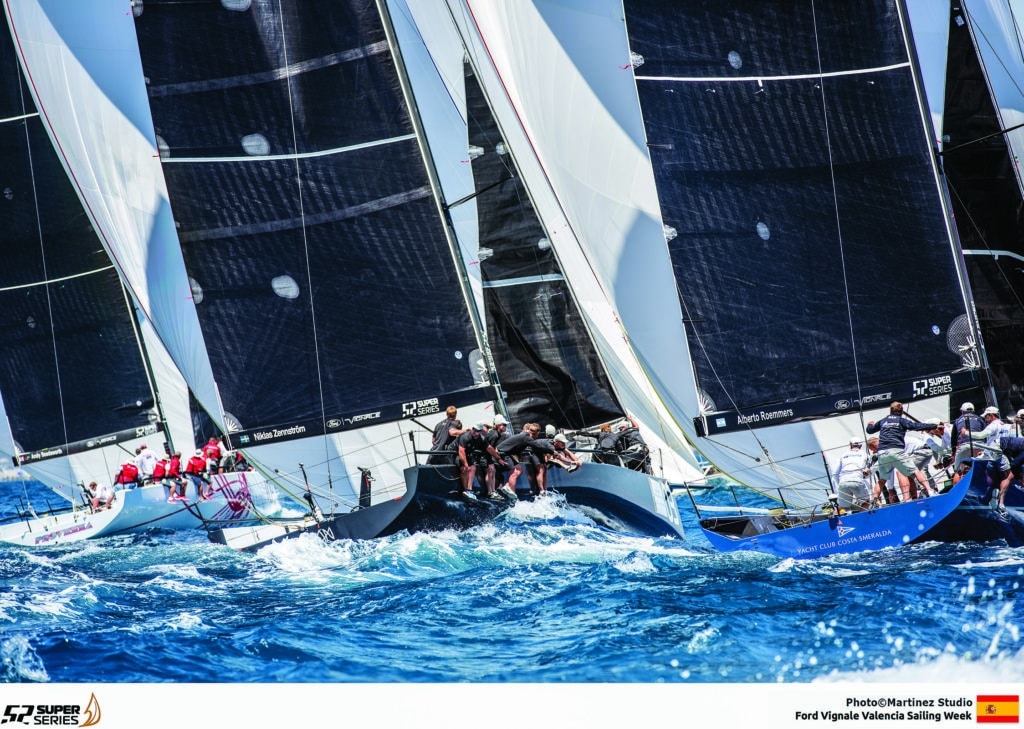
Ford Vignale Valencia Sailing Week 2015
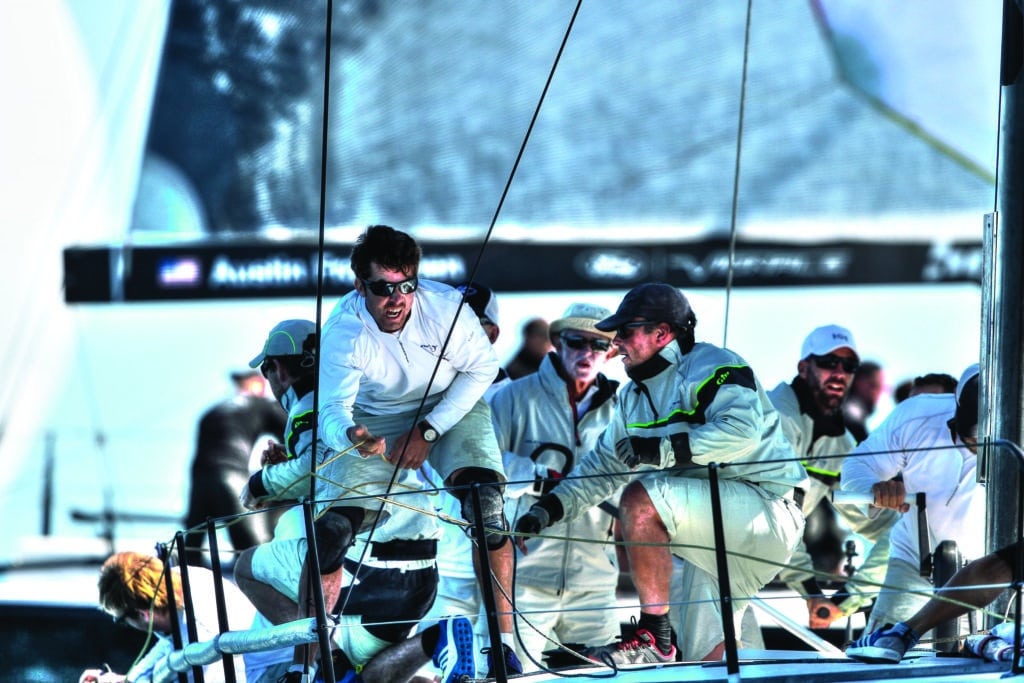
Ford Vignale Valencia Sailing Week – 52 Super Series 2015 copyright Ingrid Abery Photography. All rights reserved Copyright, Design & Patent Act 1988. www.ingridabery.com ingrid@ingridabery.com +44(0)7768 698 316
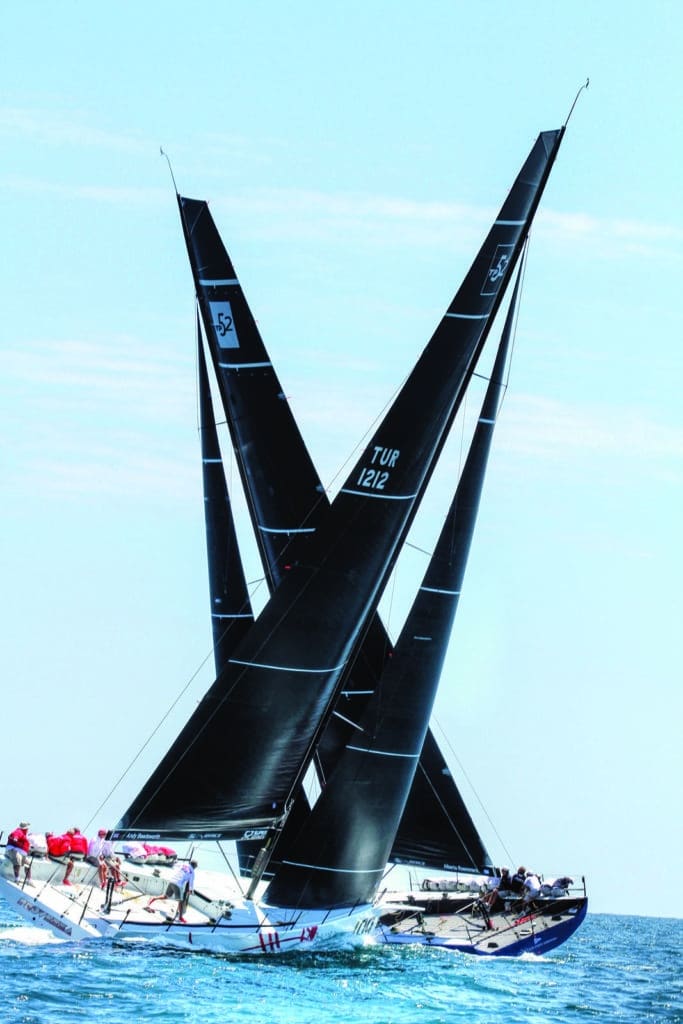
Ford Vignale Valencia Sailing Week – 52 Super Series 2015 copyright Ingrid Abery Photography. All rights reserved Copyright, Design & Patent Act 1988. www.ingridabery.com ingrid@ingridabery.com +44(0)7768 698 316
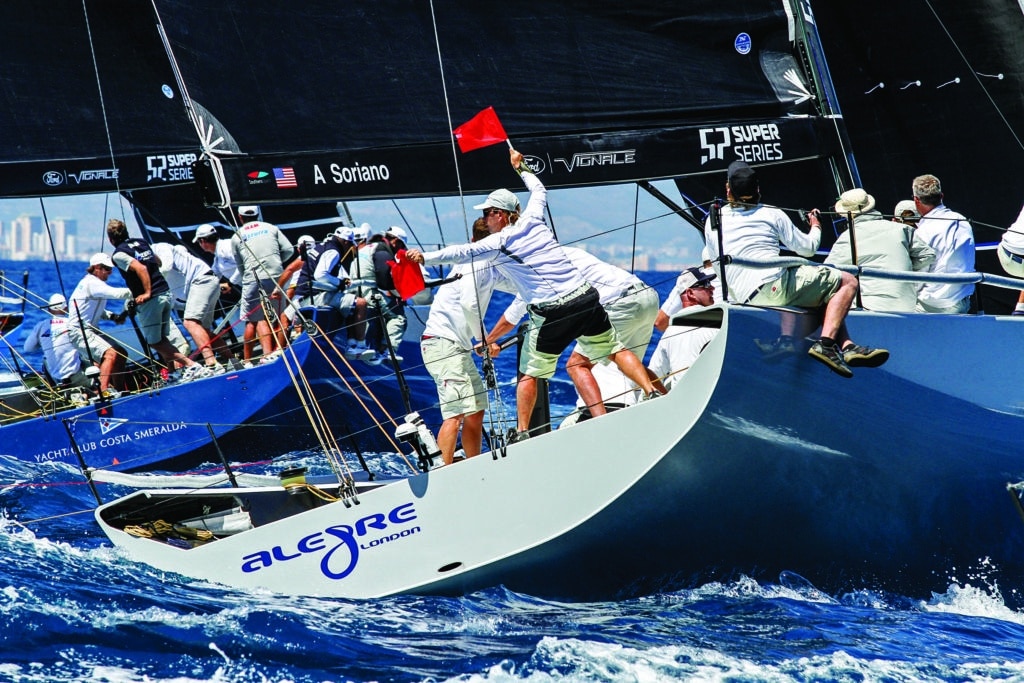
Ford Vignale Valencia Sailing Week – 52 Super Series 2015 copyright Ingrid Abery Photography. All rights reserved Copyright, Design & Patent Act 1988. www.ingridabery.com ingrid@ingridabery.com +44(0)7768 698 316
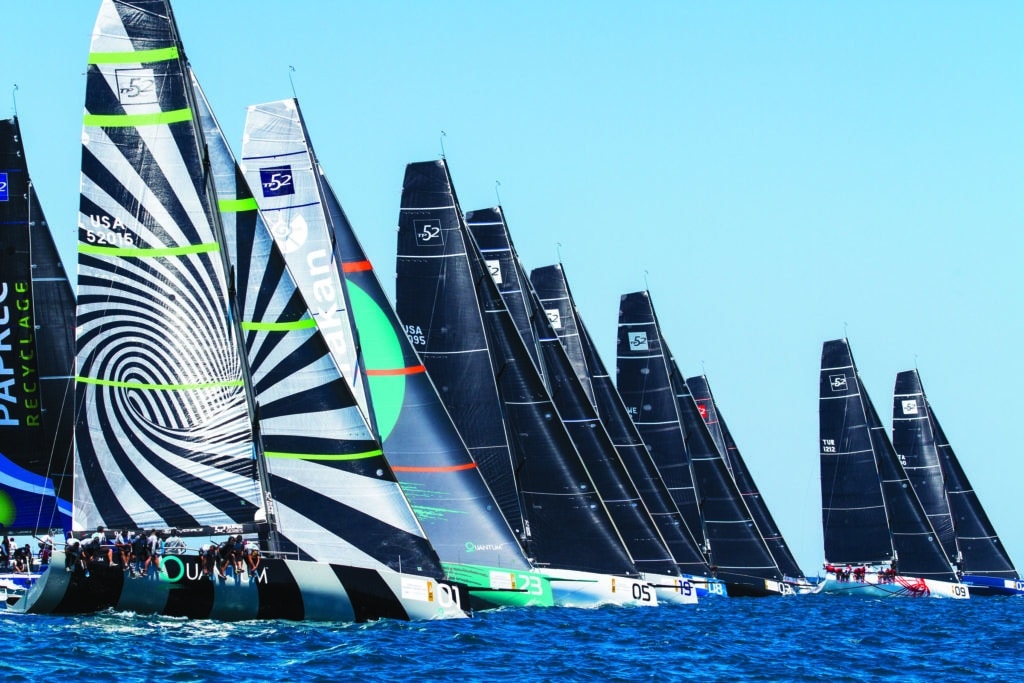
Ford Vignale Valencia Sailing Week – 52 Super Series 2015 copyright Ingrid Abery Photography. All rights reserved Copyright, Design & Patent Act 1988. www.ingridabery.com ingrid@ingridabery.com +44(0)7768 698 316
